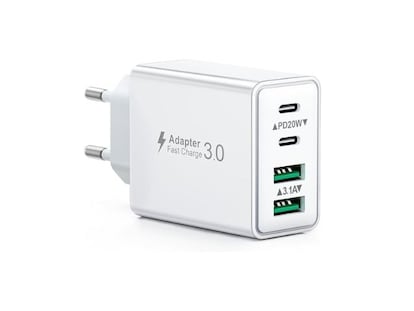Fishing for mycotoxins in food
An example of European consumer protection policy boosting scientific progress
Usually encountered as a cover of white, bluegreen or black fur over uneaten fruit or perhaps a leftover slice of pizza, moulds are more associated with a spoiled appetite than a useful part of the natural world. Yet their ecological role is quite positive: together with worms, insects and bacteria, moulds are responsible for the recycling of natural wastes, like dead plant material or animal carcasses. The continual development of life on earth essentially depends on this reprocessing of organic matter.
However, the natural recycling business is not spared from rivalries. In the fight for nutrition and natural habitats, bacteria are often competitors rather than co-workers. In order to maintain the upper hand, moulds utilise a form of chemical warfare: by means of their secondary metabolism, they produce biologically active organic molecules, which are subsequently released into the environment. Some of these agents, for example Penicillin G, are well-suited to use as drugs as a result of their antibiotic effects. However, we also know of more than 400 toxic compounds, the so-called mycotoxins. These metabolites are often not only acutely but also chronically toxic. This means that they can impair physiological development (teratogenicity) or cause cancer (carcinogenicity), for instance. In many cases, even the smallest dosages suffice to cause such deleterious effects.
Mycotoxins become a problem for humans because moulds are naturally unable to differentiate between worthless wastes and valuable raw materials. Wheat, for example, may be infested by moulds and contaminated with mycotoxins while still in the field. If such wheat is milled and processed to bread or rolls, a bakery client has no means to detect a contamination of his purchase.
In order to protect consumers, the European Union has introduced harmonised legal limits for certain food mycotoxins. These are monitored by state-operated laboratories on a spot-check basis. Due to the pronounced chronic toxicity of many mycotoxins, the legal limits can be very low. For example, the carcinogenic compound aflatoxin M1 has been limited to 25 nanogram per kilogram in infant food. This is equivalent to only 0.0000000025 percent by weight.
To determine concentrations of such tiny magnitudes presents analytical chemists with some serious challenges. This is mainly due to the fact that mycotoxins do not occur as pure substances but are distributed in a food product or raw material. The latter are themselves complicated mixtures of several hundreds or even thousands of chemical compounds. Picking out just a single compound for analysis closely resembles the proverbial search for a needle in a haystack!
Hence, selectivity is the Holy Grail when developing new, powerful methods for the determination of mycotoxins. The more selective an analytical method is, the easier the needle can be found. One of our aims at the Federal Institute for Materials Research and Testing in Berlin is to develop innovative, selective techniques that allow reliable quantification of low mycotoxin quantities in foods. To achieve this aim, we make use of the individual chemical properties of our analytes: many mycotoxins have characteristic functional groups, which may form bonds with a suitable reactant. If the reactant is fixed on a solid support, for example a polymer particle, it acts like a fishhook. As soon as a mycotoxin molecule "takes the bait" and reacts, it is firmly connected to the polymer particle and so can be removed from the food sample. At the same time, other molecules, which are unreactive because they are lacking the targeted functional group, remain behind. This allows the desired selectivity to be achieved.
This method works particularly well with liquids, like edible oils or juices. Here, the functionalised polymer particles can be added to the product directly. After the mycotoxin molecules have "bitten", the particles are removed and cleansed thoroughly. In a last step, the mycotoxin is released and taken up in a pure solvent. The concentration of the resulting solution can now be determined easily and hassle-free using liquid chromatography coupled to optical detectors or mass spectrometers.
Based on this principle, we have developed a method for the determination of the carcinogenic and teratogenic EU-regulated mycotoxin zearalenone in edible oils, which is based on reversible hydrazine chemistry. This inter alia allows for the reliable monitoring of the current EU legal limit for zearalenone in refined maize oil. In order to ensure as many zearalenone molecules as possible take the bait, we use more than 100 quintillion (100 000 000 000 000 000 000) molecular fishhooks in an edible oil sample of one-fifth of a millilitre! Even so, because polymer resins are frequently used by synthetic chemists they are readily available and cheap. This, in combination with a small sample size and a low consumption of organic solvents, makes our approach not only selective, but also highly economical. Hence, we are confident that the chemical fishing for toxic molecules can be a "hands-on" solution to many of the issues encountered in trace level food analysis today.
Tu suscripción se está usando en otro dispositivo
¿Quieres añadir otro usuario a tu suscripción?
Si continúas leyendo en este dispositivo, no se podrá leer en el otro.
FlechaTu suscripción se está usando en otro dispositivo y solo puedes acceder a EL PAÍS desde un dispositivo a la vez.
Si quieres compartir tu cuenta, cambia tu suscripción a la modalidad Premium, así podrás añadir otro usuario. Cada uno accederá con su propia cuenta de email, lo que os permitirá personalizar vuestra experiencia en EL PAÍS.
¿Tienes una suscripción de empresa? Accede aquí para contratar más cuentas.
En el caso de no saber quién está usando tu cuenta, te recomendamos cambiar tu contraseña aquí.
Si decides continuar compartiendo tu cuenta, este mensaje se mostrará en tu dispositivo y en el de la otra persona que está usando tu cuenta de forma indefinida, afectando a tu experiencia de lectura. Puedes consultar aquí los términos y condiciones de la suscripción digital.
Archivado En
Últimas noticias
Año nuevo y el Valencia sigue igual, agonizando y a la deriva
Bruselas reclama una transición democrática en Venezuela que cuente con los líderes de la oposición
El temporal pulveriza el paseo marítimo de Matalascañas en Huelva
La ortopedista amputada que hace prótesis para los heridos de la guerra en la República Democrática del Congo
Lo más visto
- Así le hemos contado las noticias de Venezuela tras la detención de Maduro este 4 de enero de 2026
- Un juez de 92 años nombrado por Clinton se encargará del juicio a Maduro en Nueva York
- El ataque de Estados Unidos a Venezuela amenaza con provocar una nueva subida del precio del petróleo
- Un topo en el corazón del régimen: un agente de la CIA en el Gobierno fue clave para capturar a Maduro
- Delcy Rodríguez tiene vetada la entrada a la UE “por violaciones graves de los derechos humanos”




























































